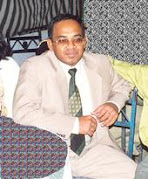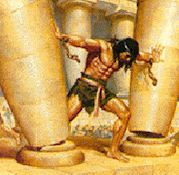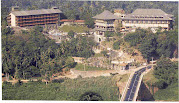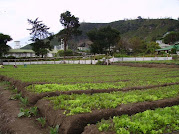SRI LANKA HOLIDAYS: The Mahavamsa or Great
Tour the tropical island of Sri Lanka, the Land of Delights with Riolta Sri Lanka Holidays. Total Holiday Experience awaits in the beautiful island of Sri Lanka.
Part 2: the translation of Mahavamsa For Part 1 click here
by B. Upul N. Peiris (bunpeiris), Moratuwa
An unrivalled distinction
Among the unrivalled distinctions which the Sinhalese of Sri Lanka had attained is an unbroken written record of their history since 543 BC covering no less than twenty-five centuries. Corroborated by archaeological, epigraphically & numismatic evidence, this history describes in great detail the major events which moulded the society & the culture of Sinhalese Buddhist nation whose achievements in diverse fields have been as spectacular as their contribution to the evolution of the Asian culture. The Mahavamsa (The Great Chronicle) is the epic poem par excellence of
Quote Dr. Ananda W. P. Guruge
The origins of the Mahavamsa can be traced at least as far back as fourth century BC. The Aryan settlers who had migrated to
Buddhism ushered in several centurirs of intense literary activity. While Tripitaka, the Buddhist Canon, was preserved in Pali (a literary form of the vernacular which the Buddha used in his discourses), the commentaries elucidating it were produced locally in Sinhala. The historical sections, known as Sihla-Atthkatha-Mahavamsa (“The Great Chronicle of the Sinhala Commentary”), were periodically updated & comprised information drawn form a number of sources:early accounts, with mythical overtones, of waves of Aryan migrations;a detailed & possibly documented monastic tradition relating to crucial events in the history of Buddhism;royal records of secular & religious achievements in the form of registeres of meritorious deeds accomplished for the befit of the Buddhist faith on the one hand, & the general public on the other;panegyrics & heroic ballads which court poets & wandering minstrels had produced to entertain royalty & edify the population.
Unquote Ananada P. Guruge
Quote Ananda W. P. Guruge
The dynastic history of at least two centuries was already thus recorded before Buddhism was introduced in the third century BC. With the advent of Buddhist monks,
Quote Ananda W. P. Guruge
Buddhism ushered in several centurirs of intense literary activity. While Tripitaka, the Buddhist Canon, was preserved in Pali (a literary form of the vernacular which the Buddha used in his discourses), the commentaries elucidating it were produced locally in Sinhala. The historical sections, known as Sihla-Atthkatha-Mahavamsa (“The Great Chronicle of the Sinhala Commentary”), were periodically updated & comprised information drawn form a number of sources: early accounts, with mythical overtones, of waves of Aryan migrations; a detailed & possibly documented monastic tradition relating to crucial events in the history of Buddhism; royal records of secular & religious achievements in the form of registers of meritorious deeds accomplished for the befit of the Buddhist faith on the one hand, & the general public on the other; panegyrics & heroic ballads which court poets & wandering minstrels had produced to entertain royalty & edify the population.
Pali, a dialect of Middle Indo-Aryan in central
The Pali Tripitake contains the earliest Buddhist cannon: the teachings of the Buddha over 45 years in the Pali language. The Tripitaka consists of three sections of the Buddha's Teachings: the Discipline (Vinaya Pitaka), the Discourse (Sutta Pitaka), and Ultimate Doctrine moral psychology. (Abhidhamma Pitaka)
Compilation of Tripitaka
Although Buddha has seized to exist, the sublime Dhamma which he unreservedly bequeathed to humanity still exists in its pristine purity. Although the Master has left no written records of His Teachings, His distinguished disciples had preserved doctrine by committing to memory and transmitting them orally, under the patronage of the pious King Vattagamini Abbaya. It was at this convocation in
Quote Ananda W. P. Guruge: The Great Chronicle of Sri Lanka Mahavamsa
Dutthagamini’s liberation of Sri Lanka from tamil domination during the latter half of the second century B.C. resulted in a wave of of Sinhalese nationalist fervour which was given literary expression in the island’s earliest known ideological historiography. This was the Sinhala-Attha-katha-Mahavamsa, composed from various earlier sourcs which included Purana-style genealogies & lineages of the sasana.
It was in the form of verses in Pali & a prose text in old Sinhalese. This work, now lost, was made use of in the composition of Dipavamsa were the chronicles of the Anuradhapura-Mahavihara & Abhayagiri-vihara.
The occasion for the composition of the Dipavamsa was the glorious war of liberation from Tamil overlordhip carried out by Vattagamini the ideology which the Dipavamsa served to reinfore was one which had been formulated in the earlier period of nationalistic enthusiasm, that is, ‘the inseparable connection of national identity & Buddhist religion’ which, for the Bhikkus, resulted in a feeling of responsibility towards nation & state’responsiblitly which they met by means of their historical writing, which magnified the notion of the Sinhalese Buddhist state, & in doing so contributed towards its preservation through the centuries. ‘historiography thus effected long-term political results. Heinz Bechert
This view of the chronicles, suggests Bechert, helps to clear up another problem, that is, the fact that the Ramayana epic has not become part of Sinhalese culture in the way it has become part of Sinhalese culture in the way it has become part of the culture of the Thai & the Khmer peoples, for example.
The omission in the Sinhalese case is the more remarkable in that Sinhalese has appropriated Vishnu & not the Shaivism of the Tamils.
Surprising as this as this non-receptivity towards the Ramayana may seem, especially in view of the fact that Lanka is the scene of the epic, it becomes intelligible when the purpose of the Pali chronicles is understood. For the chronicles provided ‘in the form of examples from the past’ a Sinhalese political ideology, the basis of which was the essential unity of the nation & the Buddhist religion of
The culminating point of the presentation of this ideology was also its most evidebt exemplification:’the so epic of Dutthagamini’. This epic, with the Dipavamsa & the Sihala-Atthakatha was put together by Mahanama (or the bhikkus whom that name represents) to form the Mahavamsa. The epic of Dutthagamini, the national Buddhist king-hero of old, was probably elaborated in connection with the events of the Tamil occupation which was ended by Vattagamini’s war of liberation. It marks the final & decisive step in the emergence of the ideology of Sinhale-Buddhist nationalism Trevor Ling
Unquote Ananda W. P. Guruge
Quote Ananda W. P. Guruge
In keeping with the ancient Indian tradition,
Unquote Ananda W. P. Guruge
The Dipavamsa (“Island Chronicle”), the earliest extant chronicle of
The imperfections of the epic poem Dipavamsa, which include grammatical, stylistic & linguistic inelegance, result from the fact that Pali, a classical Indo-Aryan language, had not yet become a literary language of the
Two centuries later, Buddhist Monk Thera Mahanama overcame these difficulties & his Mahavamsa became the epic poem par excellence of
“ ..defects in the Dipavamsa, which, naturally, could neither nor should be disputed, concern the outer form & not the contents. But, that the author of the Dipavamsa, simply invented the contents of his chronicle, is a thing impossible to believe. The Dipavamsa is a sort of chronicle of the history of the island from the legendary beginnings onwards & presents the first clumsy reaction in Pali. The Mahavamsa is a new treatment of the same thing distinguished by greater skill in the use of the Pali language by more artistic composition & literal use of the material contained in the original work.”
Prof. Wilhelm Geiger.
According to the account found in the chronicles Dipavamsa & Mahavamsa, the earliest period to which reference is made deals with the time of the Buddha Kakusanda, the first of the Buddhas belonging to the maha Bhadra Kalpa, during which five Buddhas appear to relieve mankind from he evils of suffering. The Buddhas in the past are infinite in number. Going back into the distant past of the universe which has appeared and disintegrated countless times, the Buddha visualized innumerable periods of earlier, Buddhas.
Of the known 28 Buddhas, only four Buddhas belong to this present world cycle, the fourth being Gautama Buddha whose teachings we now follow The last Buddha Guatama is the fourth in lineage. The next is Buddha Maitreya who is supposed to come into the world in another 2549 years {this year being 2008 AD + 543 BC (the year of final extinction of Buddha) = 2551 BE} time.
The chronicles also say that
A member of the Ceylon Civil Service, George Turnour, while serving in Ratnapura came in contact with a learned Buddhist monk at
Author of Mahavamsa Tika that was written between 1000 AD & 1100 AD is not known. Since Mahavamsa Tika contains information not found in Mahavamsa or Deepavamsa, it is belived that the author of Tika had access to Mahavamsa Atthakatha. From his narrations, it could be deduced that author of tika also supposed Mahavamsa Atthakatha to be known to his readers & accessible to all.
Quote George Peiris Malasekera
Whoever be the author of the Mahavamsa-Tika & whatever be the exact date of its compilation, it must be admitted that, for the age in which it was written, the work has been done with remarkable ability & efficiency. The author displays great critical acumen in the way in which he has handles his task. Variant readings have been noted, possible alternative explanations given, & shades of meanings in words have been distinguished with such meticulous care as many modern exponents of textual criticism may well be proud of. His explanation-except I one or two instances, which appear to us obscure, probably because the information available to the author of the Mahavamsa-Tika is no longer available to us-are expresses in a clear, straight forward style, free from unnecessary embellishments. His handling of his materials proves that he had a thorough & profound knowledge of the topics dealt with; nothing, however insignificant, escaped his notice. While he shows due deference to the authority of tradition, he does not shrink from pointing out an error when he comes across one even when the mistake occurs in the Mahavamsa itself. Generally speaking, he does not allow his personal views to obtrude themselves, but, where he feels that an opinion should be expresses, he gives his decision without any hesitation. The quotations given from the Uttara-vihara-Atthakatha are evidence of a wide tolerance & precision
Unquote George Peiris Malasekera
Mahavamsa tika
Vamsatthappakasini:commentary on the Mahavamsa.
Pracheena Pandit Venerable Akuratiya Amaravansa Nayaka Thero, (M. A. Nalanda,
This edition is in Sinhala script
Mahavamsa tika
Vamsatthappakasini:commentary on the Mahavamsa.
Edited for the government of
Pali text transliterated
Pali text society ISBN 0-86013-241-2
For ten long years Turnour preserved with great task, guided by his friend, the scholor-monk. And in 1837 he published his combined edition & translation of thirty seven chapters of the one-hundred chapters of the Mahavamsa. The publication created no little interest in the West. Elated by the success of his publication, Turnour took upon himself the translation of the second half of the Mahavamsa, but ill-health prevented him from doing so. He died in
George Turnour’s translation into English of the Mahavamsa, the great chronicle of
Quote James Emerson Tennent:
GEORGE TURNOUR was the eldest son of the Hon. George Turnour, son of the first Earl of Winterton; his mother being Emilie, niece to the Cardinal Due de Beausset. He was born in
He did not live to conclude the task he had so nobly begun; he died while engaged on the second volume of his translation, and only a few chapters, executed with his characteristic accuracy, remain in manuscript in the possession of his surviving relatives. It diminishes, though in a slight degree, our regret for the interruption of his literary labours to know that the section of the Mahawanso which he left unfinished is inferior both in authority and value to the earlier portion of the work, and that being composed at a period when literature was at its lowest ebb in Ceylon, it differs little if at all from other chronicles written during the decline of the native dynasty.
It is necessary to premise, that the most renowned of the Singhalese books is the Mahawanso, a metrical chronicle, containing a dynastic history of the island for twenty-three centuries from B.C. 543 to A.D. 1758. But being written in Pali verse its existence in modern times was only known to the priests, and owing to the obscurity of its diction it had ceased to be studied by even the learned amongst them.
To relieve the obscurity of their writings, and supply the omissions, occasioned by the fetters of rhythm and the necessity of permutations and elisions, required to accommodate their phraseology to the obligations of verse; the Pali authors of antiquity were accustomed to accompany their metrical compositions with a tika or running commentary, which contained a literal version of the mystical text, and supplied illustrations of its more abstruse passages. Such a tika on the Mahawanso was generally known to have been written; but so utter was the neglect into which both it and the original text had been permitted to fall, that Turnour till 1826 had never met with an individual who had critically read the one, or more than casually heard of the existence of the other.[1] At length, amongst the books which, were procured for him by the high, priest of Saffragam, was one which proved to be this neglected commentary on the mystic and otherwise unintelligible Mahawanso; and by the assistance of this precious document he undertook, with confidence, a translation into English of the long lost chronicle, and thus vindicated the claim of Ceylon to the possession of an authentic and unrivalled record of its national history. Unquote James Emerson Tennent:
Quote Douglas Bullis
During the Ceylonese colonial era, the Pali language of the original suttas (the anciet Pali spelling of the Buddha’s sutras) was so obscure that few Dutch or british bothered to learn it. Hence the Mahavamsa was largely the preserve of Sinhalese monks & elite Sinhalese until philologists became interested in it after the discovery of the Mahavamsa tika, commentary on the Mahavamsa by the name of Vamsatthappakasini in 1826.
Unquote Douglas Bullis: The Mahavamsa the Great Chronicle of Sri Lanka ISBN 955-1266-09-9
Quote Douglas Bullis
The text-plus commentary was adopted because the Mahavamsa describes little of the economic & social milieu of its time-the physical conditions of daily life;the structure & economics of rajakariya (“the Kings’s Service) & the island’s irrigation commonwealth;trade with India, China & Rome;the enormaously lon lasting effects of migrations & invasions from India;cyclical relationship between materrail wealth &spiritual decline in the Buddhist Sangha or Order of Monks;& the technical details of daily life that are learned by simply walking through ruins & reading between the stones.
Unquote Douglas Bullis: The Mahavamsa the Great Chronicle of
Turnour’s discovery of the tika, or commentary, which Sinhalese scholors had preserved side by side with the original Mahavamsa, made it possible for the Mahawamsa to be translated. Had it not been for the commentary, Turnour would have found it very difficult to give an exact rendering of the Mahavamsa composed in archaic Pali into English.
For ten long years Turnour preserved with great task, guided by his friend, the scholar-monk. And in 1837 he published his combined edition & translation of thirty-eight chapters of the one-hundred chapters of the Mahavamsa. The publication created no little interest in the West.
Elated by the success of his publication, Turnour took upon himself the translation of the second half of the Mahavamsa, but ill-health presented him from doing so. He died in
George Turnour’s translation into English of the Mahavamsa, the great chronicle of
1884 British colonialists of
Turnour’s translation spurred the colonial office in West minister to evince interest in the ruined cities of


















































































































0 Comments:
Post a Comment